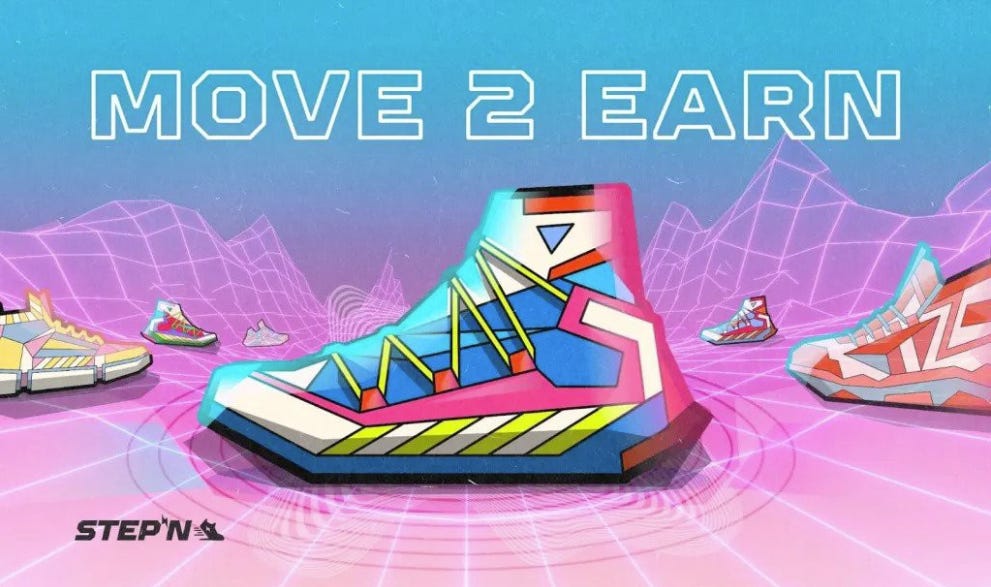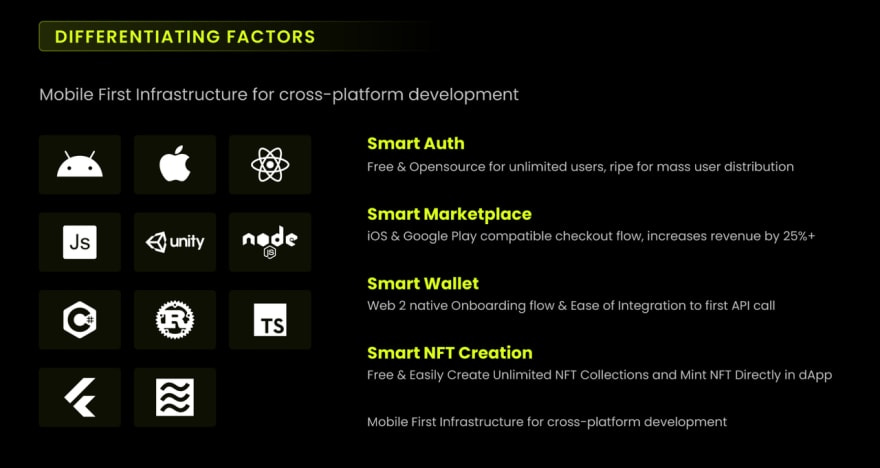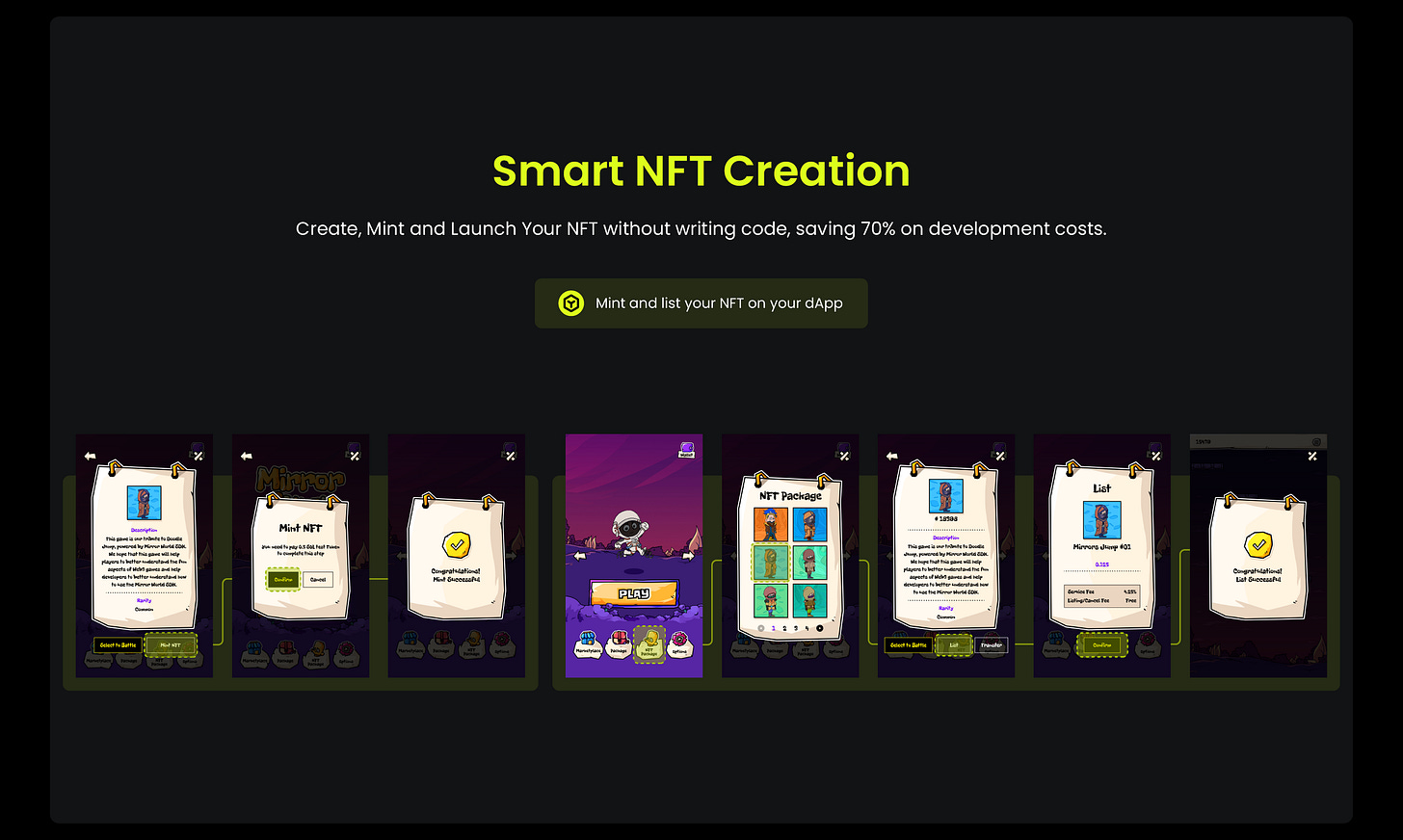Minting in-game assets in crypto games is the process of creating unique, limited-edition digital assets that can be bought, sold, and traded on blockchain networks.
This allows players to truly own their in-game items and have full control over them, rather than simply renting them from the game developer.
Key Benefits of Minting In-game Assets
Making your game a blockchain game involves several different kinds of in-game assets.
The initial NFT issuance
The more delicate in-game resource management
Both require in-game assets minting, and both of these would bring very different experiences for blockchain users, and here are some benefits they could bring respectively
Initial NFT Insurance
One of the main ways in-game asset minting is integrated into games is by issuing NFTs that will often play a big role in future gaming.
For example, StepN uses sneakers as its main in-game asset. These sneakers can be traded on the secondary market, and therefore incentivize users to be more engaged with the game in order to understand the financial side of it and also enjoy actualizing their daily activities into real-world rewards.
This kind of in-game asset is often the core of the game, and this is where you as a developer could play around with the scarcity of the NFT and therefore encourage players to go for NFTs with higher rarity.

In some cases, like Axie Infinity, the Axie NFTs can also breed and potentially generate Axies with even more rare attributes.
You could also back up these NFTs with stories and provide them with meaning. In Mirror World Gaming Matrix, there are two different types of Mirrors with different background stories, driven by the will of wanting to learn more about the narratives, players will try and be more engaged in the gaming events which could potentially lead to winning the Mirror NFT.
Some Web2 games are very suitable for this kind of situation, as World Cup 2022 is in its most intense stage, games like FIFA and Football Manager are very popular.
To bring these games on-chain, all you have to do is set the players to different rarities based on their abilities, and mint them as individual NFTs. You will have a prototype of a blockchain game.
Minor In-game Regulatory Assets
Apart from the main NFTs, which often come in limited editions, minting some other in-game assets can also help the game owner better manage the game's tokenomics and better allocate in-game resources.

By minting assets on a blockchain, the game owner can track the supply of in-game items such as tokens and other in-game equipment. This can help the game owner better monetize the game and create a sustainable in-game economy.
These in-game assets are essential for almost any blockchain game. Unlike the NFT mentioned above, which often possesses high social value due to its scarcity.
These assets are core to the progress and the pace of a game and are constantly consumed during playing. In-game utility tokens are a great example of how in-game assets could balance and control the overall gaming progress and experience.
In Axie Infinity, players need to consume SLP Tokens to perform breeding; and for StepN, players need to consume GST Tokens to upgrade their shoes.
And for our soccer game analogy, you could design a system where players need to consume certain tokens to train and therefore become better players, hence increasing your chance of winning.
On the in-game equipment side, StepN also has Gems for people to bring their sneakers with some special effects, such as increasing the speed of earning Tokens while they move and so on.
If you were to develop a blockchain soccer game, the corresponding function would be something like buying a better coach to improve the diversity and efficacy of your team's strategy.
How to Mint an In-game asset?
Minting in-game assets in crypto games typically involve creating a unique digital token on a blockchain platform, such as Ethereum. And then allowing players to obtain these tokens through gameplay or other means. Here is an example of how a developer might mint in-game assets in a crypto game:
The developer first needs to choose a blockchain platform to create the tokens on. Ethereum is a popular choice for creating in-game assets because it allows for the creation of unique tokens using its ERC-20 standard.
The developer then needs to design the in-game assets that they want to create. These assets can be anything from digital collectibles, such as non-fungible tokens (NFTs), to in-game currencies or items.

Once the assets have been designed, the developer needs to create a smart contract on the blockchain platform that will manage the minting and distribution of the assets.
The smart contract will define the rules for minting new tokens, such as how many tokens can be created and how they can be obtained by players.
The developer then needs to integrate the smart contract into their game, so that players can interact with it and obtain the in-game assets.
This can be done using a blockchain platform's software development kit (SDK) or by using a third-party service that offers tools for integrating blockchain functionality into games.
Once the game is launched and players start playing, the smart contract will automatically mint new tokens and distribute them to players according to the rules defined in the contract.
For example, if the game includes a reward system that gives players tokens for completing certain tasks, the smart contract will automatically mint and distribute the tokens to the players who have earned them.
Mirror World Smart SDK

The process above could be a bit of a pain for a small team, but just as what's mentioned in point 4, an SDK like Mirror World Smart SDK could help a lot with the whole process.
If you were to create an NFT collection in the game, in Mirror World Smart SDK, the whole process would take less than 10 minutes to deploy, which would be really significant compared to doing all of the steps above all over again.
All you have to do is to enter a couple of different attributes, upload or generate the NFT pictures or any in-game asset you would like to make, and the asset would be on-chain as you wanted.
The SDK would handle the complexities of interacting with the blockchain and managing the smart contract, allowing the developer to focus on the design and gameplay of their game
In addition to that, Mirror World Smart SDK allows users to list and sell their items while inside the game, and the payment is completed in-game marketplace using the in-game wallet.
This smooth, coherent in-game purchasing experience would only take you about 30 minutes overall to deploy, saving tremendous amounts of energy for you to focus on your own game development.
If you are interested in Mirror World Smart SDK, please check the following links:
Website: https://mirrorworld.fun/developer
Twitter: https://twitter.com/mirror_matrix
YouTube: https://www.youtube.com/channel/UC9NkOWpL_b2kotDBmtE98dw
We have marked the source of all the non-royalty-free pictures, if you would like us to withdraw the picture, please let us know through any contact from above.






